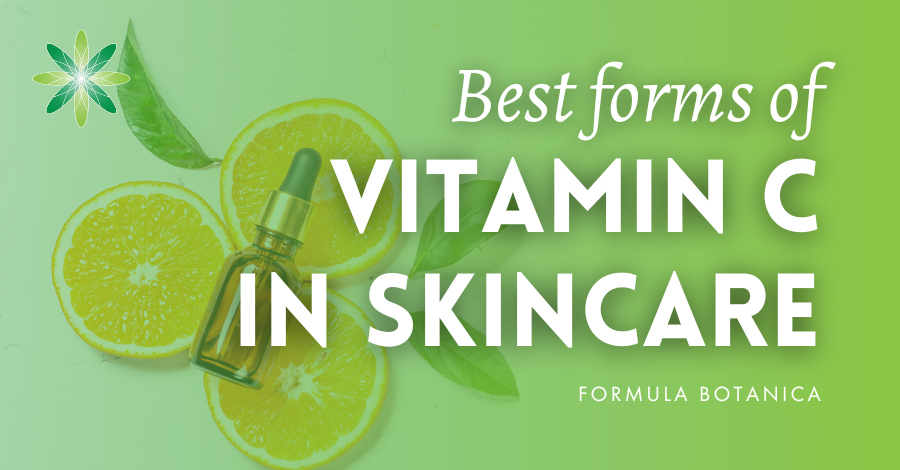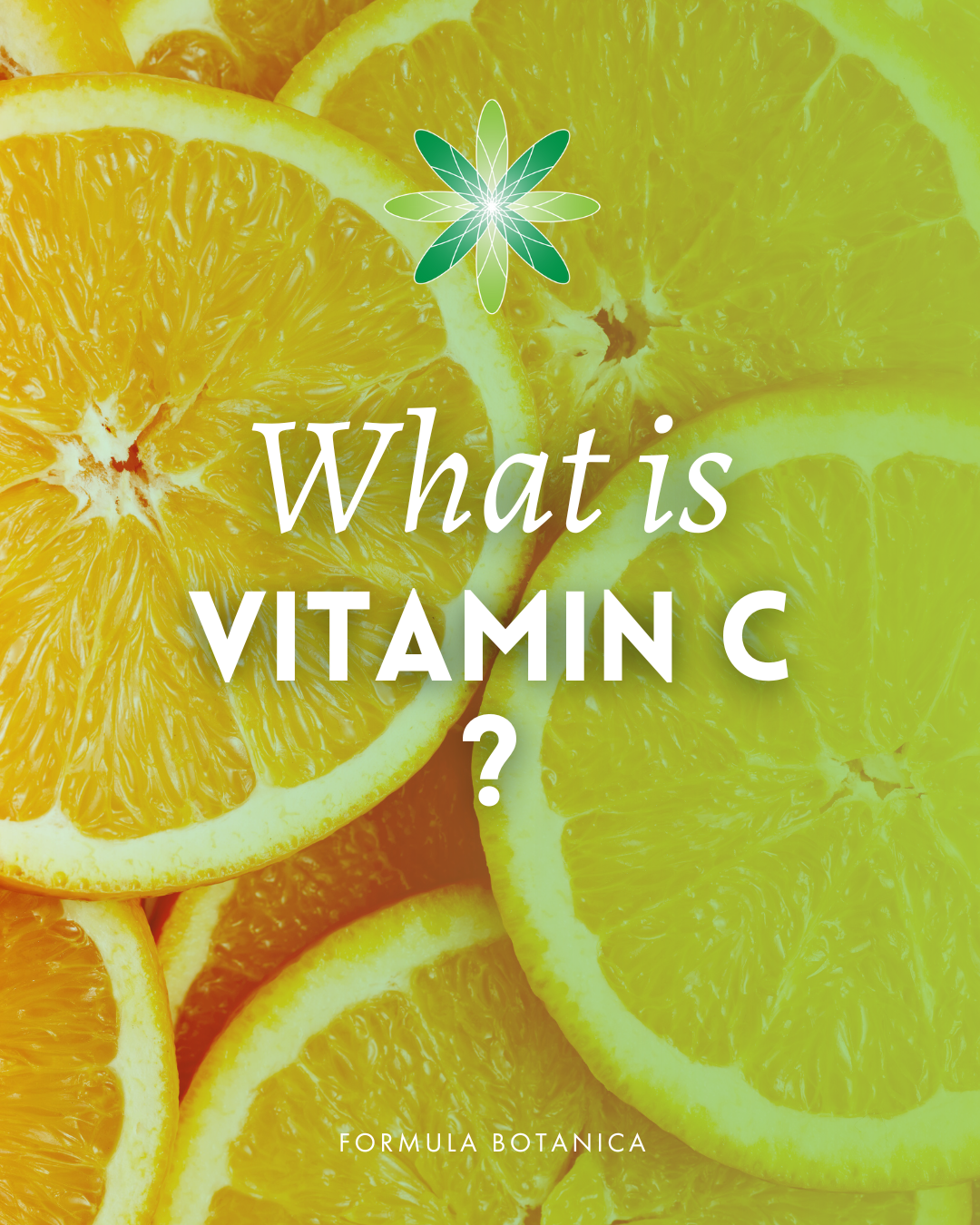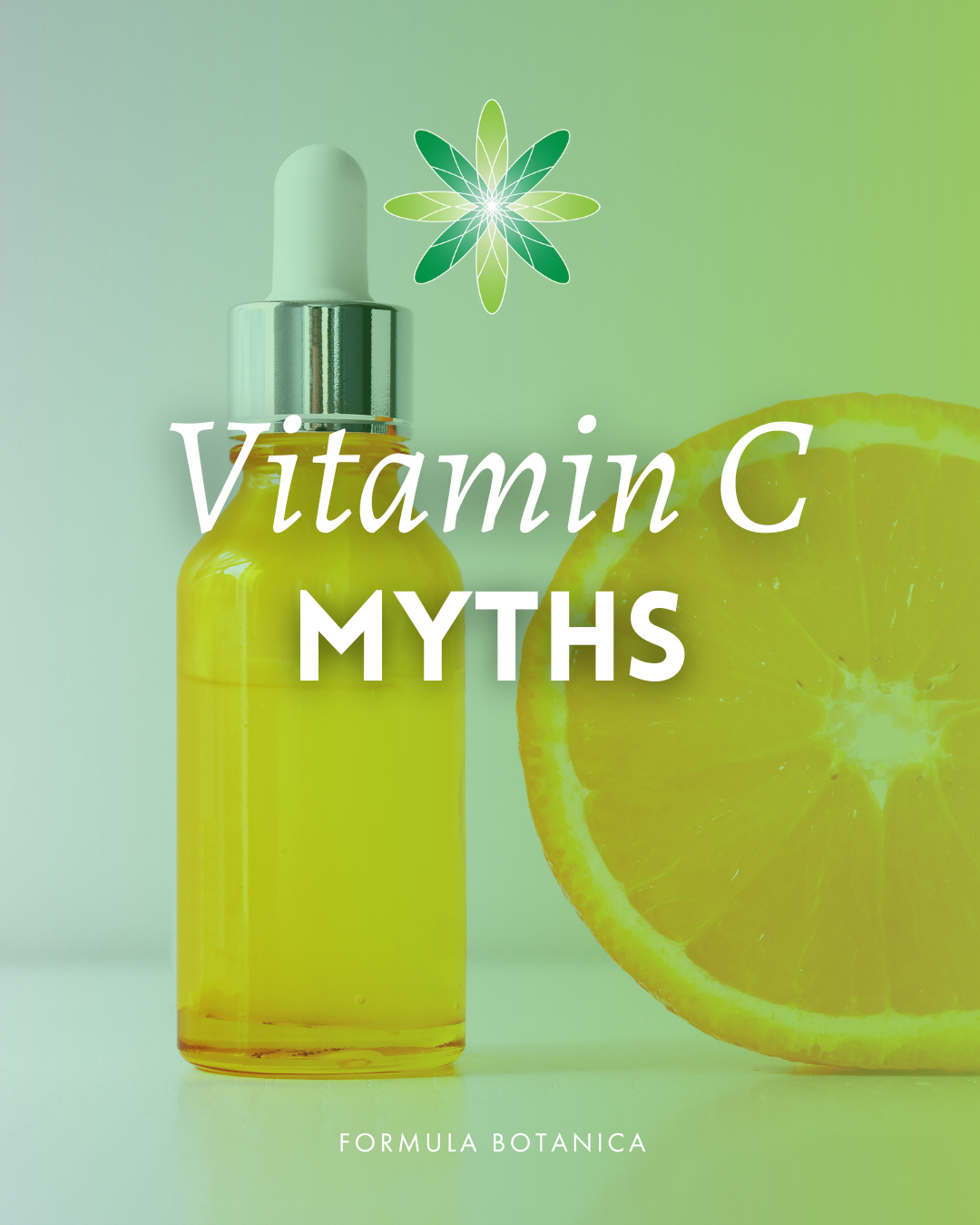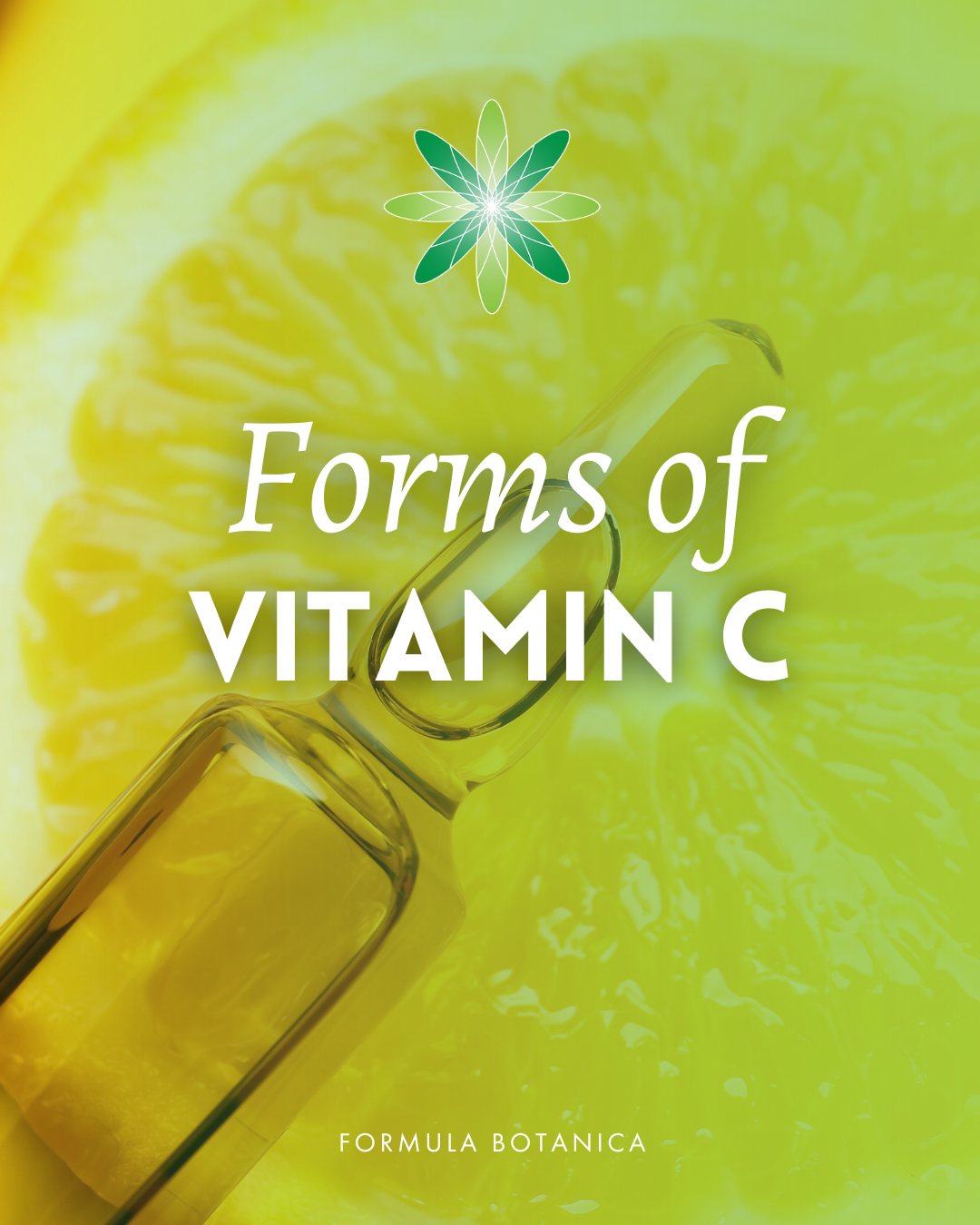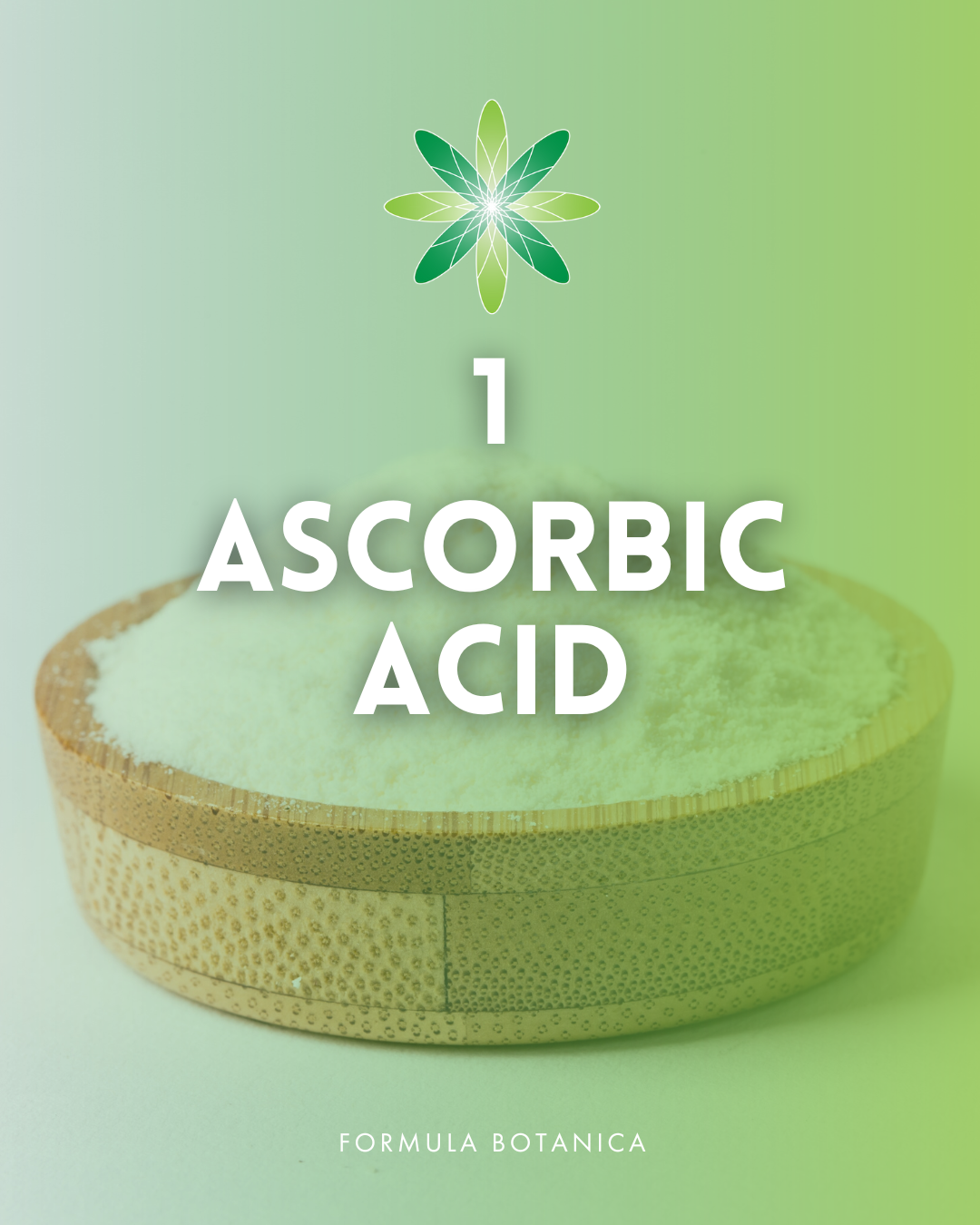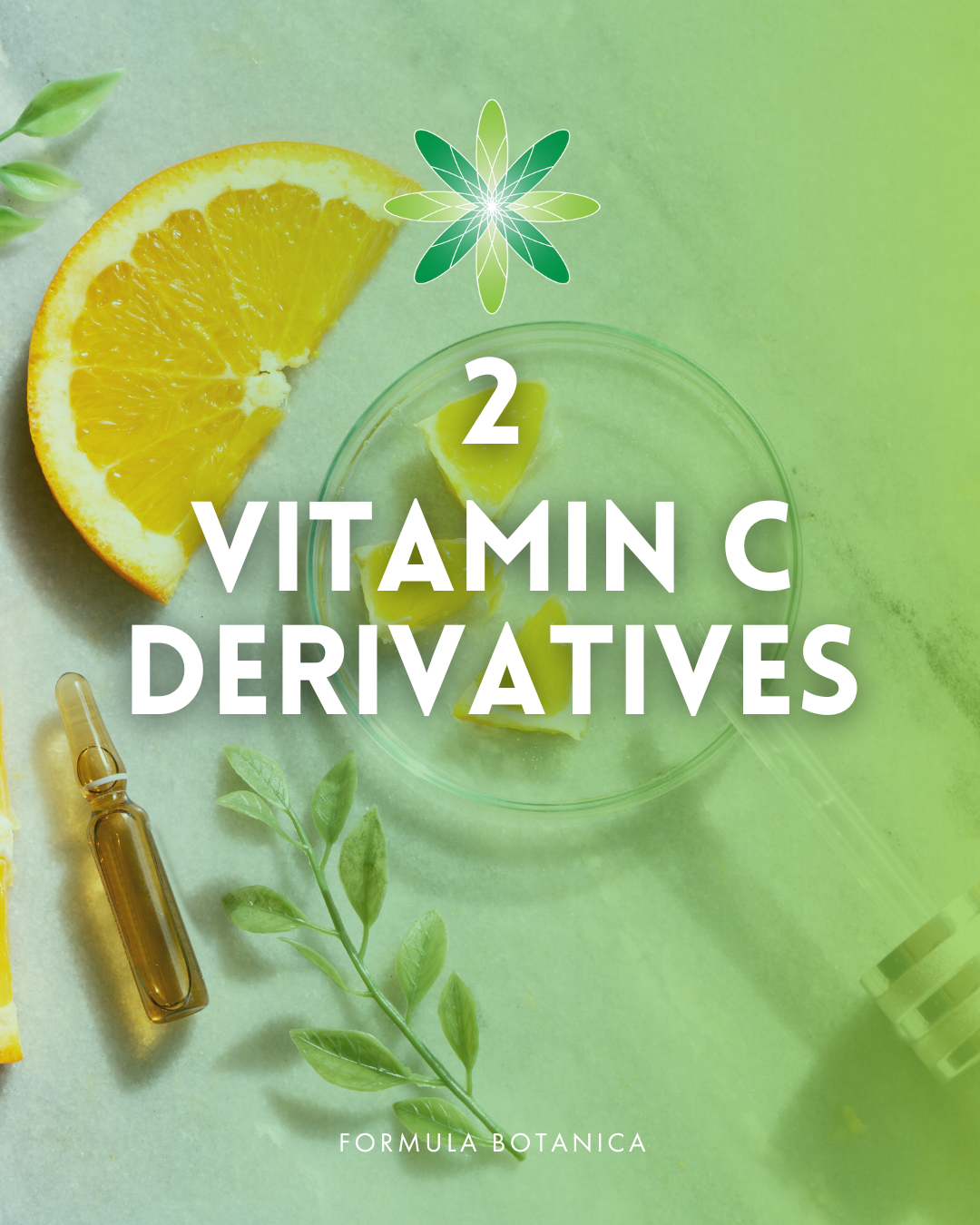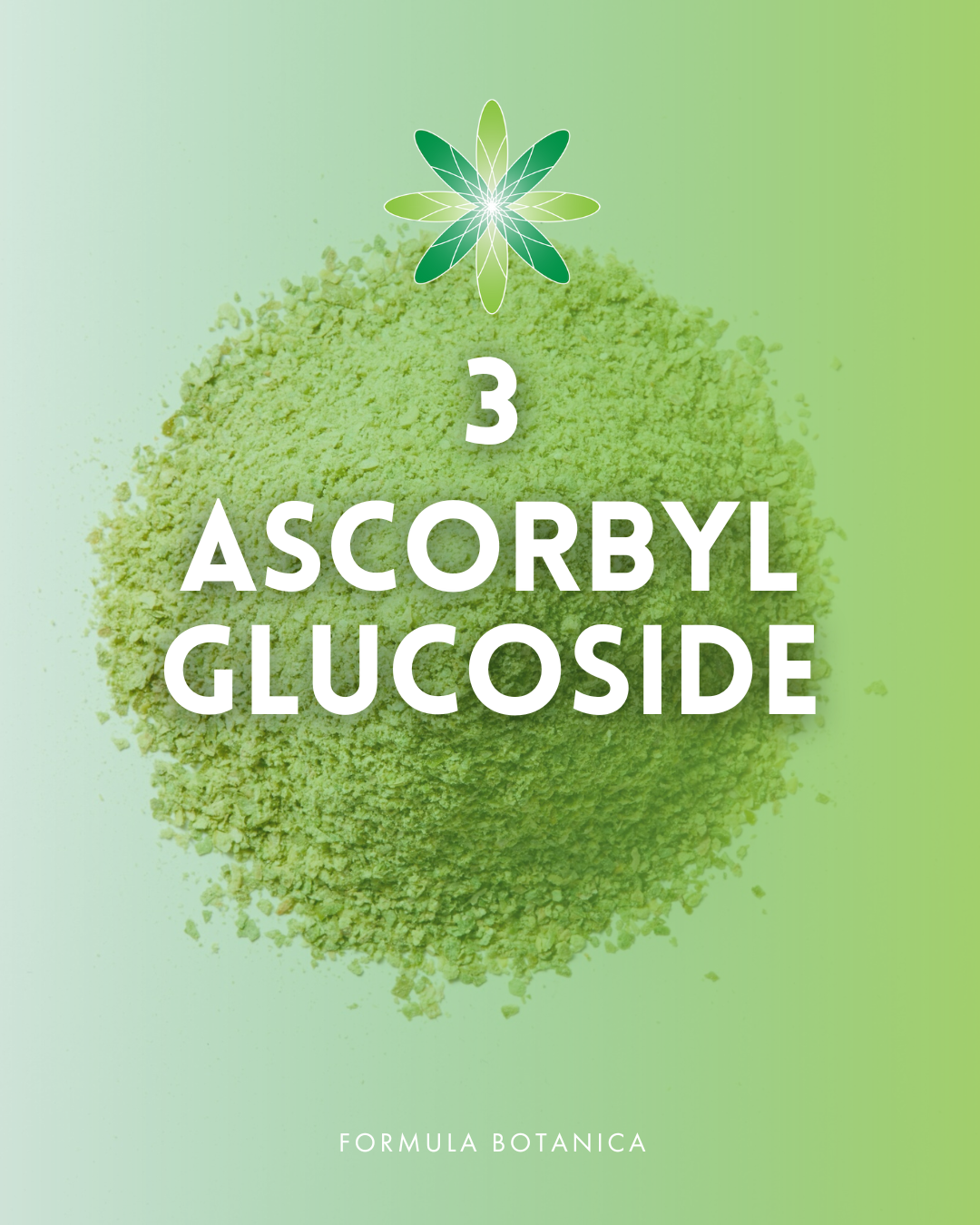Updated: 18.03.25
Vitamin C is undoubtedly one of the most popular cosmetic ingredients of all time.
Celebrated for its powerful antioxidant and brightening effects, it has remained a firm customer favourite for years, so it’s no surprise that so many formulators want to include it in their products. However, vitamin C is also notoriously unstable and tricky to formulate with, and can sometimes cause skin irritation.
But here’s the good news: there are several forms of vitamin C available on the market that you can use that provide similar benefits while being more stable and gentler on the skin.
In this post, we’ll walk you through these alternatives, helping you choose the best form of vitamin C for your formulations. If you’ve ever wondered how to add vitamin C to your natural formulations or which form to use, this post is for you!
What is vitamin C?
Vitamin C, also known as ascorbic acid, is an essential vitamin for our health, found abundantly in fruits and vegetables. Since, unlike most animals, our bodies can’t synthesise vitamin C, we need to rely on external sources, primarily through our diet, to obtain it.
Beyond its health benefits, vitamin C is a remarkable skincare ingredient that acts as a potent antioxidant, stimulates collagen production and helps even out skin tone. It is also one of the most widely researched vitamins in skincare, with well-documented benefits, which is why so many people want to formulate with it.
If you’re curious to learn more about vitamin C and its numerous skincare benefits, check out this post:
The most common vitamin C myth
One of the biggest myths about vitamin C is that botanical oils or essential oils contain vitamin C. While this is widely spread across the internet, it’s simply not true.
While certain fruits or vegetables are indeed rich in vitamin C, the vitamin doesn’t make its way into oils. That’s because vitamin C (L-ascorbic acid) is water-soluble, so it can’t be present in plant oils.
Take rosehis, for example. While rosehips are known to contain vitamin C, rosehip oil does not. Don’t get us wrong: the oil has amazing skin benefits, but vitamin C is not one of them. That’s why it’s so important to research your ingredients and the science behind them while being mindful of marketing claims.
If you’re interested in debunking more vitamin C myths, read this post:
Best forms of vitamin C in natural skincare
Now that you know that botanical oils don’t contain vitamin C, let’s explore the different forms of vitamin C you can use in natural skincare formulation.
Since you can’t exactly chop up fruit or vegetables and add them to your formulations (that would be a stability nightmare and only something a DYIer would attempt!), you need to use lab-synthesised vitamin C.
While most natural formulators accept this, you have to decide whether you’re comfortable using lab-made ingredients. To help you make this decision and give you a quick refresh on the shades of natural, listen to our very first podcast episode:
Available forms of vitamin C in natural skincare
There are several forms of lab-synthesised vitamin C you can use in your cosmetic formulations.
While L-ascorbic acid is the most biologically active form of vitamin C, it is also the most unstable one. It quickly oxidises when exposed to light, oxygen, or heat. Ascorbic acid is also water-soluble, meaning you can’t use it in your anhydrous (oil-based) formulations. Fortunately, there are other, more stable forms of vitamin C, available, and we’ll explore them below.
Keep in mind that vitamin C and its derivatives are advanced ingredients and that you should only formulate with them once you’re an advanced formulator.
If you would like to become an advanced formulator, pre-enrol for our Advanced Diploma in Organic Cosmetic Science.
1. Ascorbic acid (water soluble)
Pure vitamin C, also known as L-ascorbic acid, is the most biologically active form of vitamin C. First isolated in the early 1900s, ascorbic acid is the original form of vitamin C, and its powerful effects on the skin are well-documented, which is why so many formulators want to add it to their products.
Structurally, L-ascorbic acid (LAA) is a weak sugar acid structurally related to glucose. In our bodies, it is found both in its acidic and ionised forms (as mineral ascorbates).
It acts as an antioxidant by donating an electron, which converts it to an oxidised state. Ascorbic acid is then oxidised to dehydroascorbic acid, which is recycled back to ascorbic acid and reused.
In skincare, you can use it as a brightening and rejuvenating agent. This is how it works: ascorbic acid inhibits melanin formation, reducing hyperpigmentation, and acting as an antioxidant. It also plays a key role in collagen production by regulating, promoting, and stabilising collagen structure.
Because of these benefits, many products for mature skin or hyperpigmentation include vitamin C.
Disadvantages of ascorbic acid
Unfortunately, ascorbic acid has its downsides. For one, it’s highly unstable, which is a problem for us natural skincare formulators. When exposed to light, heat, or air, vitamin C quickly oxidises into dehydroascorbic acid (DHAA) and loses its effectiveness. This reaction is reversible, but if the oxidation process continues, DHAA can degrade irreversibly and generate various compounds, including erythrulose.
Erythrulose, a self-tanning agent, reacts with skin proteins, which explains why oxidised vitamin C can leave an orange-reddish stain on the skin that won’t simply wash off. To be effective and penetrate the skin, ascorbic acid requires a low (acidic) pH of below 3.5. At this pH, the molecule carries fewer ionic charges, making it easier to pass through the stratum corneum.
Please don’t worry if you can’t understand all of this now. As you progress in your formulation skills and knowledge, you will be able to understand these concepts better.
Recap
While ascorbic acid is undoubtedly one of the most effective forms of vitamin C in natural skincare, it is also the most unstable.
Some claims about its efficacy may also require professional testing and could classify your product as either a drug or a cosmetic, leading to stricter regulations. Before formulating with vitamin C, it’s crucial to understand the specific regulations in your country.
Working with ascorbic acid requires advanced formulation skills. As a formulator, you’re responsible for ensuring your products are safe, effective, and stable. Always approach vitamin C formulations with caution and a deep understanding of its challenges.
2. Vitamin C derivatives: Stabilised vitamin C
If you’re eager to formulate with vitamin C but are concerned about its instability, we have some good news!
In recent years, the beauty industry has shifted its focus from simply extending the shelf life of ascorbic acid to developing more stable vitamin C derivatives.
These derivatives are compounds structurally related to ascorbic acid, created by combining it with other molecules. This helps protect the vitamin from oxidation and degradation. Theoretically, these vitamin C derivatives are converted back to ascorbic acid when applied to the skin, delivering the same benefits.
The most common vitamin C derivatives are esters, which result from the reaction between an acid and typically an alcohol. There are also other types of derivatives, like glucosides. These stabilised forms offer several advantages for formulators, such as:
- Greater stability, as they are less sensitive to oxidation than ascorbic acid
- The ability to function at higher pH levels than ascorbic acid
- Less potential for irritation
Vitamin C derivatives are also very versatile, as they come in both oil-soluble and water-soluble forms, giving you greater flexibility in your formulations. Here are some vitamin C derivatives you can experiment with:
Water-soluble
- Magnesium ascorbyl phosphate
- Sodium ascorbyl phosphate
- Ascorbyl glucoside
Oil-soluble
- Ascorbyl palmitate
- Ascorbyl tetraisopalmitate
If you’re looking to create an oil serum, balm, or butter for example, you could use ascorbyl palmitate or ascorbyl tetraisopalmitate, which are esterified forms of vitamin C that are oil-soluble.
If you’re a more advanced formulator and are comfortable formulating water-based products, ascorbyl glucoside is one of the best options, as you’ll see in the section below.
The main disadvantage of vitamin C derivatives is that, since they need to be converted back to ascorbic acid on the skin, they can be less effective than pure vitamin C.
There are also fewer studies to support their action, as they’re still relatively new to the market. However, the research is promising.
3. AA2G: The most promising vitamin C derivative
Every form of vitamin C has its pros and cons. While ascorbic acid is the most researched and effective one, vitamin C derivatives are more stable. And among the naturally derived stabilised forms available to you, ascorbyl glucoside (AA2G) is one of the most promising ones.
Properties
- INCI: Ascorbyl Glucoside
- A stable derivative of ascorbic acid, produced by an enzymatic process that combines ascorbic acid with starch glucose
- White to off-white powder
- Water-soluble
- Effective at a pH between 5-7, so it is gentler for sensitive skin
- Naturally derived & Ecocert/COSMOS-approved
Benefits
AA2G offers decent stability and has some scientific backing. Here’s what we currently know about its effects:
- It has better antioxidant activity than other vitamin C derivatives, though not as much as ascorbic acid
- Studies demonstrated AA2G converts into ascorbic acid in both lab (in vitro) and human (in vivo) settings
- It stimulates collagen synthesis in vitro
- It helps reduce UV-induced damage in vitro
- In human trials, it showed beneficial effects when combined with other high-performance ingredients
Formulation tips
- Application dosage: Check with your chosen supplier as usage information can vary. Usually, the recommended usage rates are between 0.1-5 %.
- Formulation advice: Ascorbyl glucoside is easy to work with. You need to dissolve it in water and adjust the solution’s pH before adding it to the rest of the formulation in the cool-down phase
Please note that since this active is more stable at a near-neutral pH range, you should pick a preservative that is effective at this pH too.
If you would like to learn more about vitamin C and its different forms, check out our exclusive membership site, the Lab at Formula Botanica, where you can explore these ingredients in-depth in our comprehensive vitamin C Mini Lab.
Learn how to formulate with vitamin C
We hope you enjoyed this post and found it helpful! Vitamin C is an amazing ingredient with powerful benefits, but choosing the right form for your formulation isn’t always straightforward.
Now that you understand the differences between ascorbic acid and its derivatives, you’ll hopefully be able to make more informed decisions for your skincare formulations.
Remember, there’s no one-size-fits-all answer – each form of vitamin C has its pros and cons. Whether you choose pure ascorbic acid or a stable derivative, the key is to find what works best for you and your formulation.
If you’d like to learn more about formulating with high-performance ingredients like vitamin C, check out our Advanced Diploma in Organic Cosmetic Science, where you will learn advanced techniques and learn to formulate with advanced ingredients.
Alternatively, if you’re new to formulation, and aren’t sure where to begin, sign up for our free online foundation course and see just how fun and easy it is to become a natural skincare formulator.
FAQ
- Which form of vitamin C is best for the skin?
Vitamin C, L-ascorbic acid (LAA), is the most biologically active form of vitamin C. However, it is also notoriously unstable and prone to oxidation. This makes it unsuitable for most natural cosmetic formulations.
The good news is that there are several forms of stabilised vitamin C derivatives available, and ascorbyl glucoside seems to be one of the most promising options. This derivative presents fairly good stability and has some evidence backing up its action. It shows antioxidant properties and you can use it in your high-performance skincare formulations for mature skin.
- Does vitamin C make your skin better?
Ascorbic acid has properties that make it an interesting choice for high-performance skincare. It acts as a strong antioxidant and participates in collagen production and stabilisation. It also has a brightening action, evens the skin tone, and helps prevent the signs of ageing.
You can use stable vitamin C derivatives, which are more stable than vitamin C and present similar properties, although these are less effective than pure ascorbic acid.
- Is putting vitamin C tablets on your face good?
Crushing and hydrating readily available forms of vitamin C, such as food supplements in tablet or powdered form, or using raw vitamin C-laden fruits on your skin, is not advisable.
Cosmetic-grade ingredients are always the best choice for your skincare products. As a cosmetic ingredient, vitamin C and its derivatives must be formulated professionally to work as desired and in synergy with other ingredients in the cosmetic formulation.
- Where can I learn to formulate natural skincare and haircare products?
Join us at Formula Botanica, where tens of thousands of students and followers take our free and paid online courses to learn how to formulate organic skincare and haircare for themselves or to sell.
References & further reading
(i) Enescu CD et al., 2022. A review of topical vitamin C derivatives and their efficacy.
(ii) Jacques C et al., 2021. Ascorbic acid 2-glucoside: An ascorbic acid pro-drug with longer-term antioxidant efficacy in skin.
(iii) Stamford NPJ, 2012. Stability, transdermal penetration, and cutaneous effects of ascorbic acid and its derivatives.
FREE TRAINING
Learn how to become an
Organic Skincare Formulator
FREE TRAINING
How to become an
Organic Skincare Entrepreneur
FREE TRAINING
How to become an
Organic Skincare Entrepreneur
Leave us a comment

Jilly Schechter is a Tutor at Formula Botanica, where she helps our students to become better organic cosmetic formulators. Jilly lives in Belgium and loves writing tutorials on how to make skincare and haircare.

